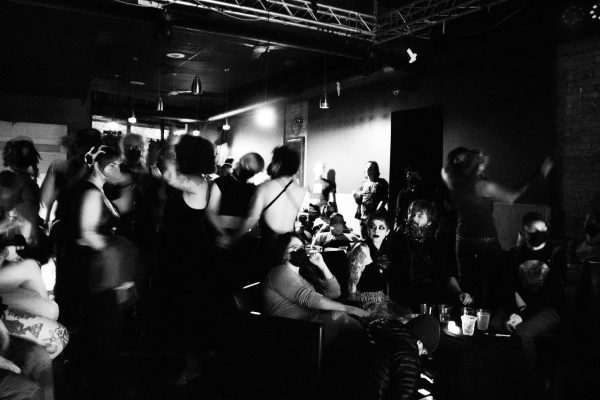Underneath the deep, dark Minnesota night sky lies a diverse and vibrant community of goths.
Whether hosting picnics and flea markets or dancing to the bittersweet beats played by alternative DJs, goths welcome anybody and everybody who wants to become closer to their dark entries. Although you may not know it, the goth scene is as diverse and varied as the music at its center.
Although the goth subculture began in the early 1980s with the gloomy post-punk of British bands like The Cure and Joy Division, it quickly grew beyond music from the United Kingdom, becoming the incredibly varied and unique community it is today.
There is not one concrete definition of what it means to be goth, but many still find themselves enamored with the beautiful darkness of the goth world.
Goth and goth-adjacent club nights are the most popular places where fans of dark music conglomerate to celebrate the beauty of the macabre and sorrowful art they so passionately enjoy.
Mar Navarro, who DJs and organizes goth nights under the name Gothess, said they found a place of acceptance within the goth community.
Unfulfilled by the music played in other bars and clubs, Navarro said they began seeking alternative venues that played their kind of music. Eventually, Navarro found themself in the midst of the goth clubs, where they said being tender and showing emotion is encouraged and celebrated.

“It’s a celebration of love knowing that death is coming,” Navarro said.
Navarro said their mission is to give representation to historically marginalized groups through music. They said when people think of goths, they usually think of someone tall, pale and “vampire-looking,” which is a common misconception.
Fellow goth DJ Jei Herald-Zamora said they aim to give a voice to underrepresented communities through their events.
Herald-Zamora goes by the name DJ Gwiingwans, which they said means “Little Shooting Star” in Ojibwe. They host an event called Dead Star Nation which has a residency at Mortimer’s Bar on Lyndale Ave.
Visual artist First Church of the Corrupted Signal produces glitchy visuals inspired by the occult and alchemical research for Dead Star Nation. He said creating visuals is an interesting meditative process.
“Creating magic is similar to the process of creating art,” First Church said.
Further down Lyndale, the Uptown VFW hosts “Transmission” a free post-punk and new wave themed dance night organized by local DJ Jake Rudh. Rudh said he does not consider himself goth, but he shares many of the same interests, especially music.
“Everyone’s got a little bit of darkness inside of them,” Rudh said.
No two goths are the same. Some dress all in black all the time and listen almost exclusively to the dark, synth-heavy music synonymous with the subculture, while others choose to express themselves differently than the traditional goth image.
“Subcultures don’t have to be all about nonconformity,” First Church said.
Even though the goth scene is incredibly diverse and consists of countless branches, subgenres and styles, what brings them together is their love of the subculture and — most importantly —their love for each other.
“I think that’s a beautiful thing,” Rudh said.
